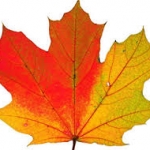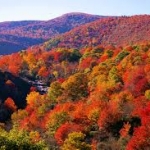Why Do Leaves Change Color?
 Autumn is a magical time of year. The cooler weather, the smell of campfire, and the changing leaves. If you have the good fortune to live in the Northeast, the changing foliage can be quite dramatic indeed. But just why do leaves change color? What natural forces are at play here?
Autumn is a magical time of year. The cooler weather, the smell of campfire, and the changing leaves. If you have the good fortune to live in the Northeast, the changing foliage can be quite dramatic indeed. But just why do leaves change color? What natural forces are at play here?
There are three main factors that determine leaf color change: pigmentation, length of night, and weather. Of these, changes in length of night are the most consequential. As daylight wanes, biochemical processes within the leaves are initiated, resulting in a shift from green pigmentation, to browns, yellows, oranges, and reds. Once the nighttime-length threshold is crossed for any particular given species of tree, the autumnal display begins.
Chlorophyll, the biomolecule that allows plants to absorb energy from sunlight, lends leaves their green color. Throughout the summer, when sunlight is plentiful, chlorophyll is the dominant pigment. As autumn approaches and chlorophyll production slows, however, other pigments—carotenoids and anthocyanins—begin to appear. Carotenoids are responsible for the yellow, orange, and brown colors in carrots, corn, and daffodils; and anthocyanins give color to things like cranberries, red apples, blueberries, cherries, and plums. But while carotenoids are present all through the growing season, anthocyanins are only produced in autumn, in response to excess sugar build-up within leaves. This sugar accrual is due to the gradual sealing off of the veins leading into the leaf; once the veins are fully sealed, the leaf breaks away and falls to the ground.
 Though peak fall foliage varies from year to year, it generally begins in late September in New England, and moves southward, reaching the Smoky Mountains by early November.
Though peak fall foliage varies from year to year, it generally begins in late September in New England, and moves southward, reaching the Smoky Mountains by early November.
